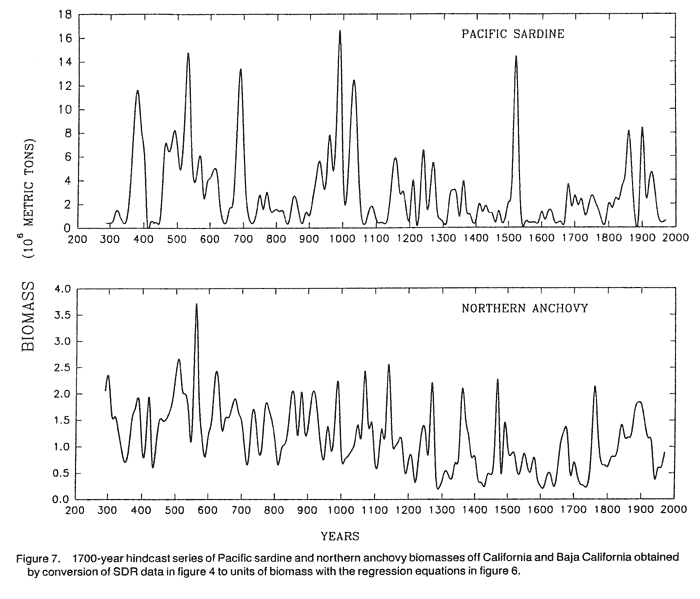Populations of fish are not in a steady equilibrium state, but increase and decrease with changes in ocean conditions. By using information contained in the sediments in certain marine and freshwater environments, scientists are able to examine historical records of fish populations going back centuries. These records demonstrate that populations fluctuated even before fisheries changed the populations. Evidence exists for changing sardine, anchovy, and hake populations over seventeen hundred years from sediments off Santa Barbara, California. There have been at least 8 periods when the sardine population has been high for at least 20 years, and then collapsed. Anchovy have experienced more frequent, but smaller peaks of abundance. Since these samples were all taken in one area, they cannot tell us about the north-south expansion of the populations, just their relative abundance at this location. What it does tell us is that the variability we have seen in these species in the last 100 years is not unusual and was probably tied to climatic variability (see Anchovy Collapse / Sardines Expansion response example). This type of work with scales, showing similar results, has also been done in the Gulf of California and off South Africa. Using different technology, abundance of salmon in Bristol Bay has also been estimated over the past 300 years.
These studies are highly instructive and have implications for fisheries management. We cannot assume that just because a fishery has harvested a certain amount of fish over several decades, that amount was always there or will always be there -- we must pay attention to the variations in the ocean environment.
|
Sardine and Anchovy Biomasses
 Click on image to enlarge
Click on image to enlarge
|
